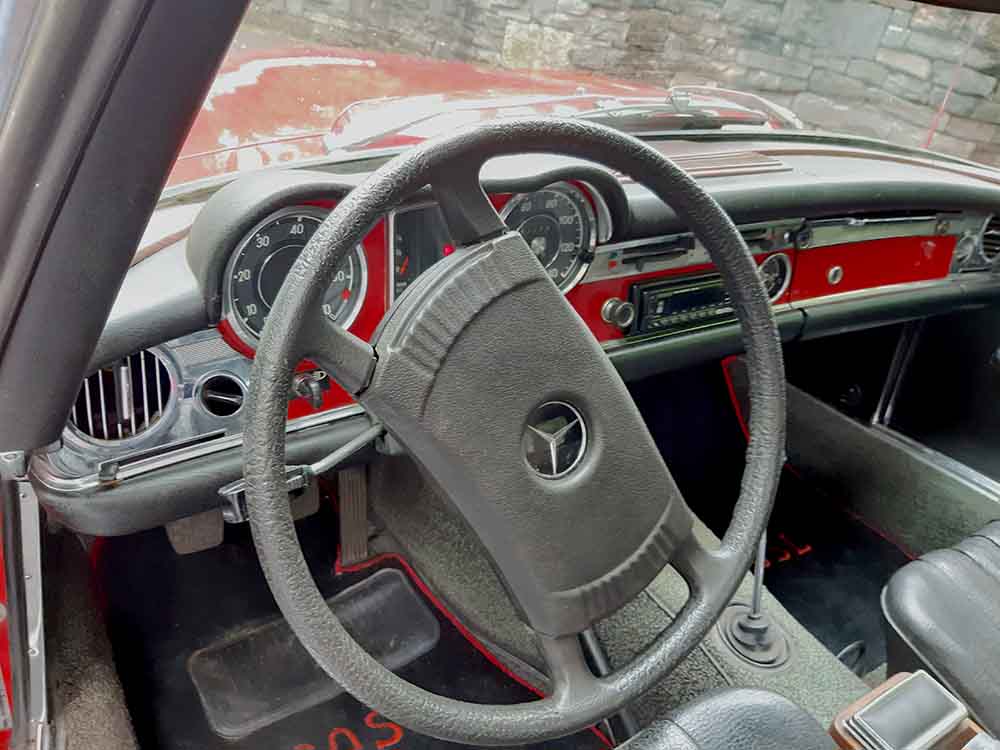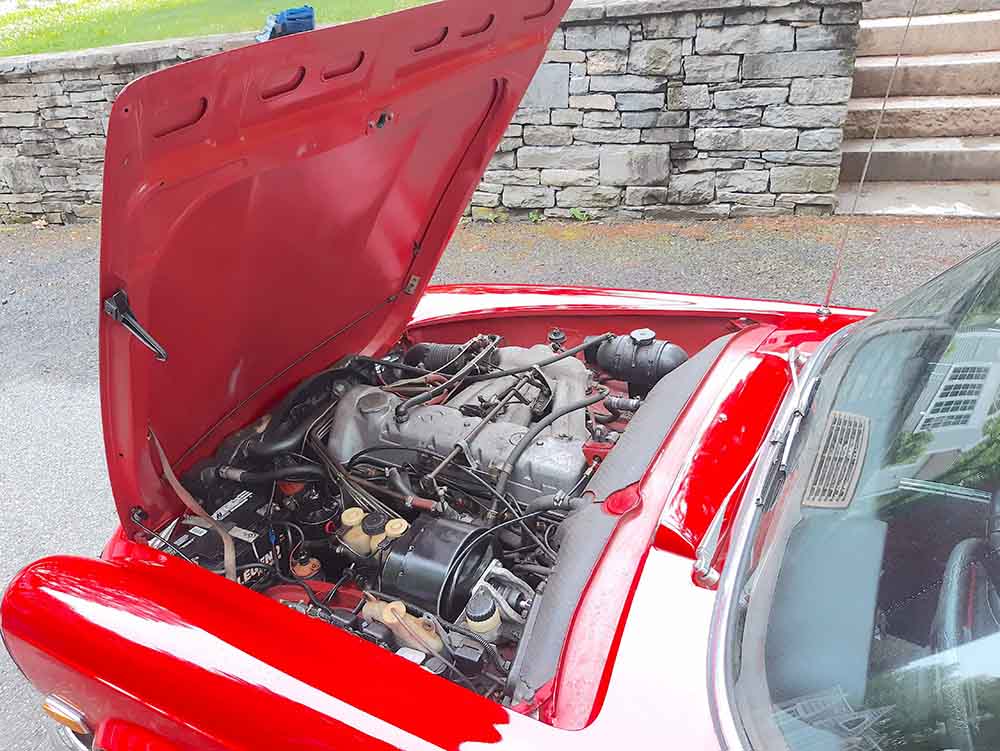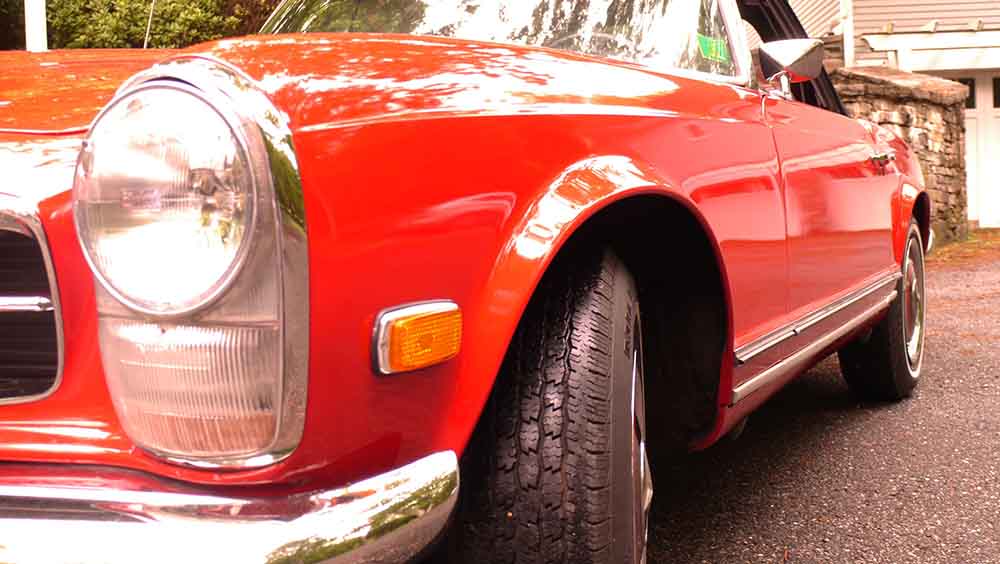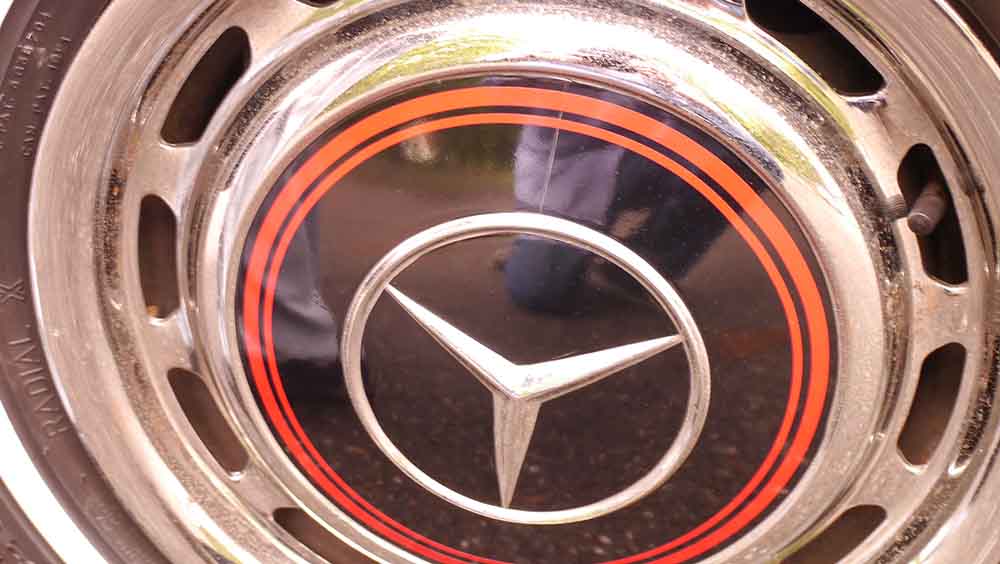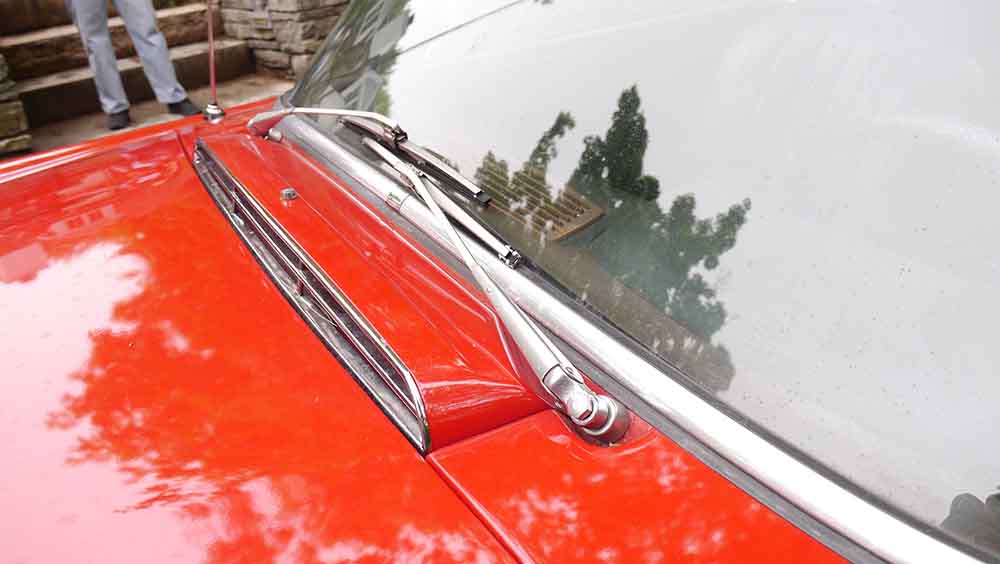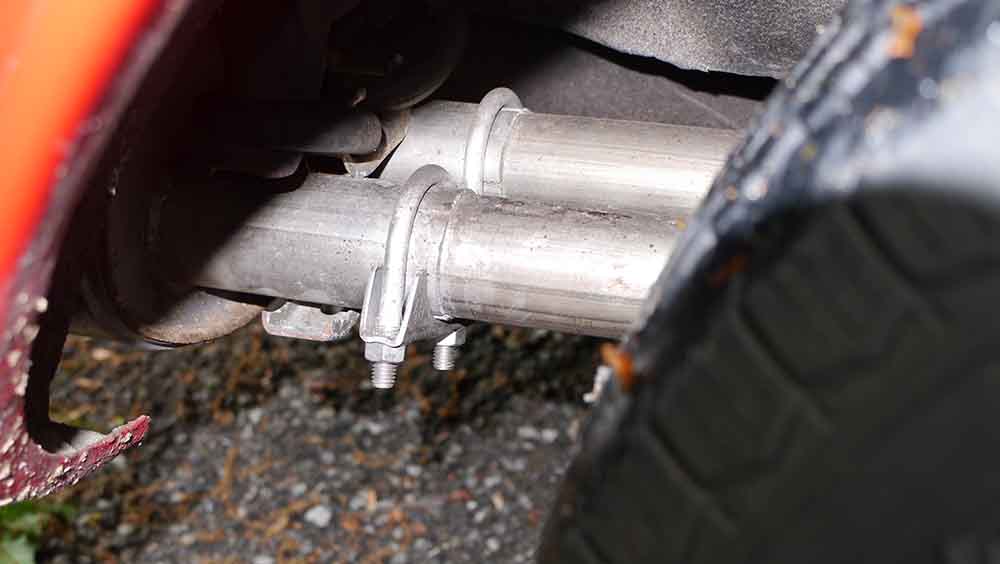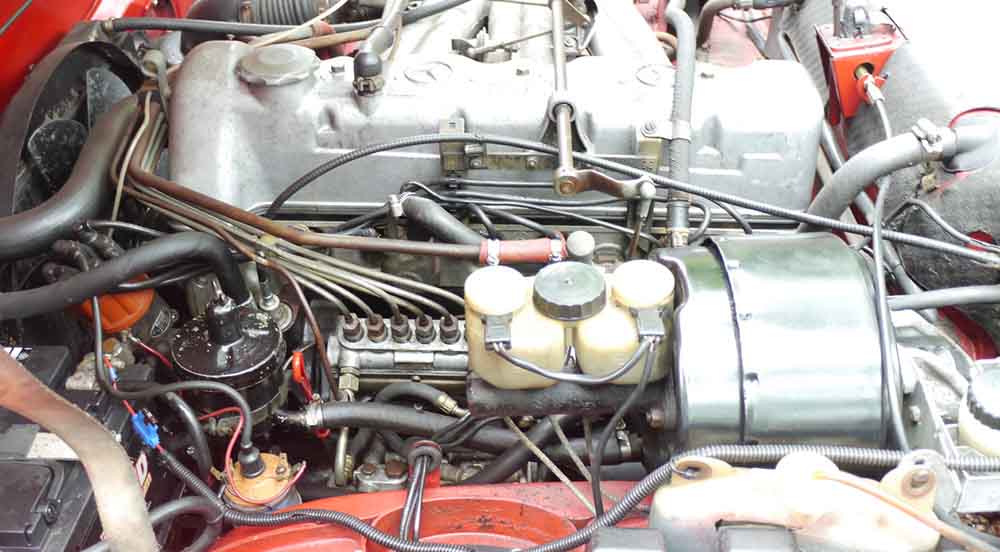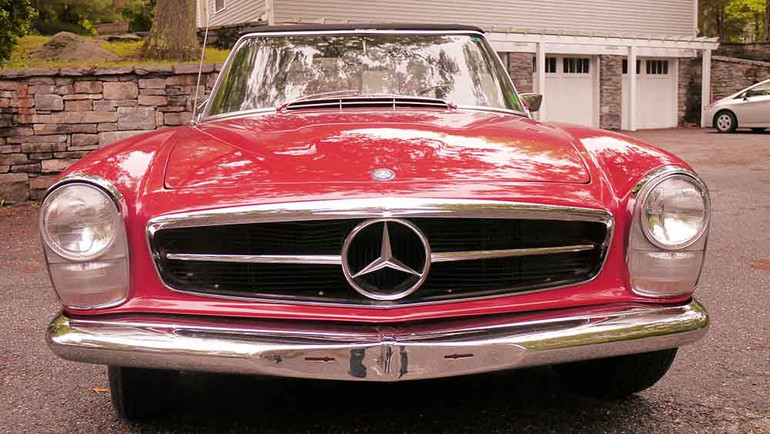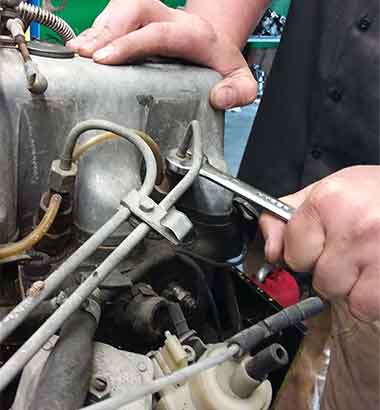A Mercedes SL Story:
How the W113 Pagoda Brought the Mercedes-Benz SL-Class to America
By Kenneth Tiven & Steve Becker
edited by Sheila Heaney
“Grandpa, what does this thing do,” the 10-year old asked pointing at the chromed handle on the inside of the sports car’s door. At last he was getting to ride in pop’s old Mercedes and he wanted an explanation of all the strange things it seemed to possess. It did not have a roof, but the lad had seen plenty of convertibles on television and understood.
“That is a window crank. Turn it and the window goes up or down. Try it,” Steve Becker said to Dominic, his grandson, whose mother had learned to drive a standard shift car in this very same 1968 Mercedes-Benz 280SL. This is the modern touring car that followed the post war Mercedes 190SL. The W113 Mercedes Pagoda was built in various engines and designation, including the 230SL, 250SL and 280SL from 1963 through 1971. In those days Mercedes-Benz was not building 24 different models as they do today.
Born in the 21st century, Steve’s grandson
had only experienced cars with electric windows, a rarity in the 1960’s when
this particular model was built. Cars were less complicated, even luxury cars
from Mercedes-Benz. Telephones were in your home or office. Pent up demand from
the austerity of World War II fueled the economy and America built huge numbers
of cars, houses and roads. As Dinah Shore sang, “see the USA in your
Chevrolet,” because the open road represented freedom.
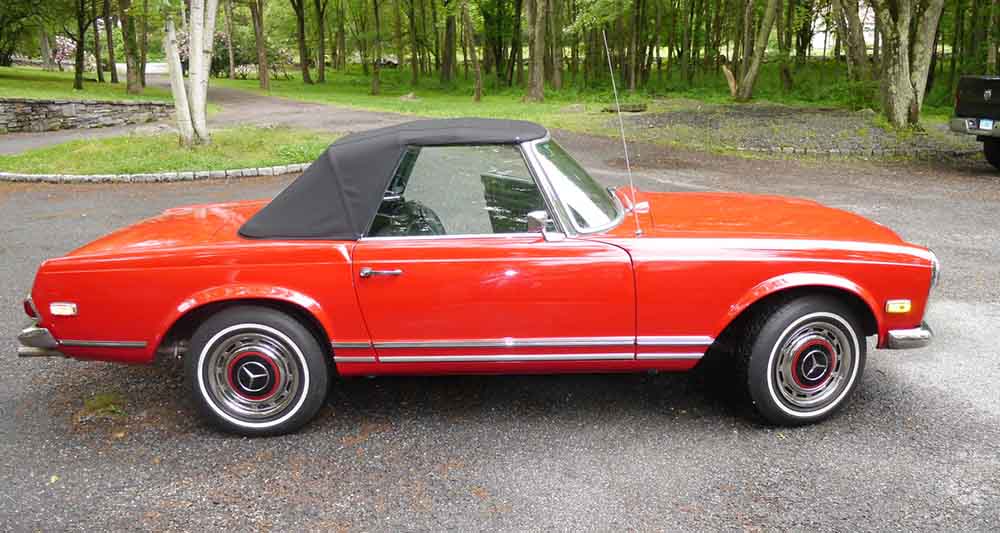
Mercedes-Benz Rises: from WWII to SL Race Cars
In the late 1940’s, European car makers faced a bleak future. As destroyed nations struggled back from the war, buyers could only afford small utilitarian cars. This was especially the case in Germany, where sales of trucks and commercial vehicles were in greater demand than passenger cars. This favored Mercedes-Benz, which that had built military trucks during the war, and launched the Unimog in 1948. However, most German companies were seeking ways to separate their image from the negatives of Nazi Germany. Mercedes-Benz management decided a return to motor racing would help define the new MB, reflecting the 1930’s when it had dominated motor racing and luxury cars. In 1952, Alfred Neubauer returned as team manager and Mercedes went racing—the SL class was born. Many technical aspects of its pre-war formula racer went into the new W198 300SL Mercedes-Benz. In various forms it won in Europe and North America—most famously at the Italian Mille Miglia, a race on public roads. Stirling Moss’s winning drive from Rome to Brescia and back added immeasurably to the global fame of the Mercedes 300SL. Moss died in 2020 at the age of 90 in England.
In the 300 SL MB had a superb but very expensive car to highlight its engineering excellence. What it sold to less affluent buyers was the 190SL, which then Mercedes-Benz Technical Director Prof. Fritz Nallinger characterized as too slow, though the 300SL was too expensive for volume sales. Neither was a good fit for consumers like Steve Becker.
In the late 1950’s, Americans who sought something more exciting than traditional American cars were offered only the Corvette and the Ford Thunderbird.Steve grew up in eastern Connecticut, not a hot spot for sports cars even though Lime Rock race track was just 110 miles away. But like all Americans of that era he was aware that Corvettes and Thunderbird were fast with V-8 engines, and provided an ego enhancement for the driver, despite average handling and braking. So how did Americans come to welcome European sports cars with open arms? How did Steve Becker end up owning a cherished 1968 Mercedes 280SL over 50 years later?
Ferdinand Porsche, an Austrian national, had been a major force in the engineering history of the Automobile for most of the 20th century. The Volkswagen was the elder Porsche’s design for the People’s Car Hitler wanted. After the war, along with his son his son Ferry, he moved to Gmund, Austria to design a sports car generously based on VW designs and components. With the success of the Porsche 356, the entire operation moved to Stuttgart, Germany and remains headquartered there.
Max Hoffman, also an Austrian,
was a pre-war race car driver and automobile businessman. After WWII he ended
up in New York as a refugee. With the war over, it was Hoffman who facilitated VW, Porsche and Mercedes Benz bringing
vehicles to the United States. The rich and immense US market was critical,
Hoffman told them, while Europe will spend decades recovering. The dapper and erudite Hoffman—in
precise High German—provided prophetic design and style advice to European car
companies as well as distributing their products in America. Mercedes-Benz sold
only 34 cars in the US from 1948 thru 1951. In 1952 alone, with Hoffman as the
distributor, they sold 255 cars. In 1953 they sold another 420 cars and never
looked back. In 2020 the company will record its 8,000,000
th vehicle
sold in the USA.
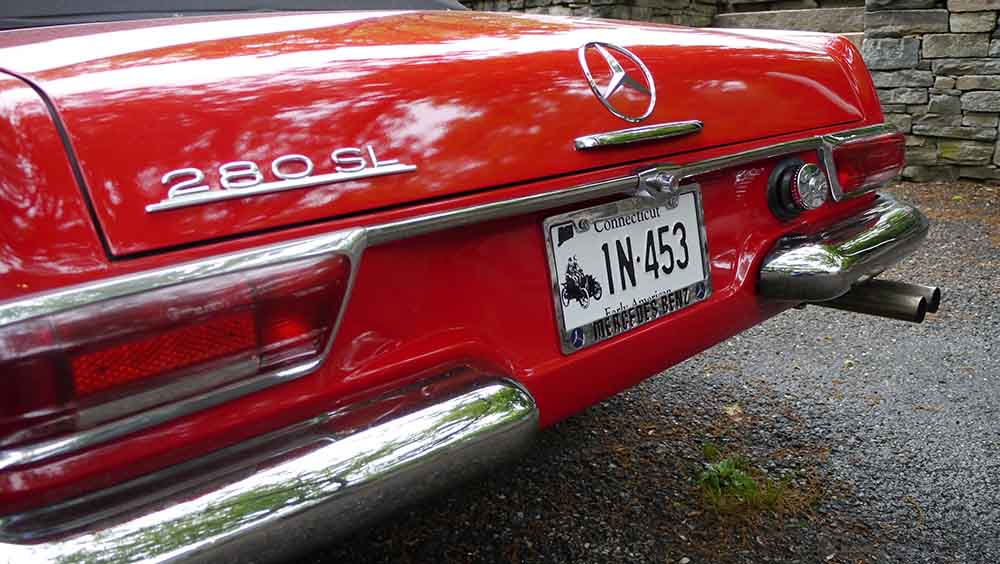
The Birth of the W113 Mercedes Pagoda
It is said that Hoffman told Mercedes-Benz that he could sell one thousand 300SL Gullwings in the USA, encouraging them to build something that was both expensive and exotic. In the mid 1950’s, Borgward, Jaguar and Porsche were all prized for their style and driving characteristics. Porsche was rumored to be developing a sports car that was significantly faster than the 356 and utilized a 2.0 liter six cylinder engine. With the Mercedes 300SL Halo car lighting up race tracks, there was every incentive to do something exciting.
While a variety of issues hampered planning for a new Mercedes roadster, the company settled on most design parameters by 1960, and in March 1963 the new 230SL Mercedes Pagoda debuted at the Geneva Auto Show—the first of the W113 Mercedes-Benz Chassis. Six months later, the Porsche 911 was unveiled at the Frankfurt Motor Show. That level of competition in design and performance has continued for decades, much like a football match between rival clubs.
The new 230SL roadster featured the first car body with crumple zones and attention to passenger survival in an accident. It was also the first MB with radial tires. The W113 Chassis Mercedes is remembered for its so-called Pagoda roof because it was concave toward the center and higher on the edges. That roof was removable and a soft top was also fitted. Emission regulations in America were accommodated with modest engine changes.
As the W113 Mercedes matured
it underwent enhancements and engine modifications becoming ultimately the
280SL, introduced in December of 1967. In just over four years of
production, Mercedes-Benz sold 23,885 of the 280SL. As Max Hoffman had
suggested, more than half would be sold in the USA.The W113 Mercedes
280SL continued in production through February 23
rd 1971, when it
was replaced by the entirely new and substantially heavier R107 Chassis, with
the 350SL as the first model in the series.

Steve Becker’s Beloved Mercedes 280SL
Steve was president of a large mechanical contracting company for most of his professional life. Two of his good friends drove sports cars and Steve Becker wanted his own. In 1983, a friend who ran a car dealership took a 1968 Mercedes-Benz 280SL Pagoda in trade from a Naval officer headed out to sea. “He knew I was interested in this particular Mercedes series, says Becker.” It was in reasonable shape but over nearly four decades of ownership he had various systems replaced or overhauled.
“It is like a new car today with timely help from MBZ Parts and some talented local mechanics. Even the clock works,” he says. Mercedes W113 parts are not easy to come by. While most of the US models came with an automatic transmission, this particular car has a 4-speed manual transmission, stirred by a spindly looking gearshift lever, which young Dominic found very strange indeed in his granddad’s car.
This 280SL also has an unusual exhaust system—the result of a project
his company did for a stainless steel fabricator, who offered Steve a custom
made exhaust system to get a “discount” on the cost of work Steve did for him.
This is definitely a “one-off” item on a car that now has 90,000 miles. It is
basically a weekend driver. It has always been garaged and spent part of its
life in Southern California. Steve trailered it out there and a dozen years
later, trailered it back to Norwich, Connecticut where he lives now. Steve
Becker takes his grandson Dominic for Sunday rides in his ’68 280SL. What more
could he want from life than sailing smoothly down the road in a piece of
history with his grandson?
Shop Mercedes W113 SL Parts Here

